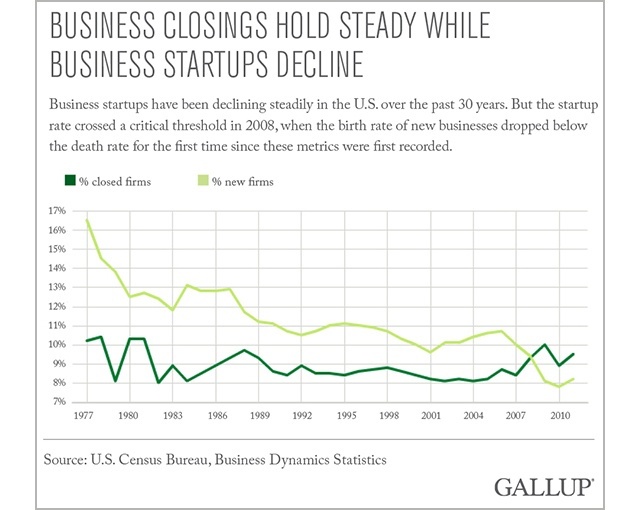The holidays are officially upon us! It’s a season of giving, gratitude, and spending time with those who matter most to us.
This is a perfect time to give thanks to your customers and your employees for all the work they’ve done over the last year, but some organizations today still miss the opportunity to give their team something meaningful during the holidays.
How can you show your gratitude to your team this holiday season? We asked our team to share their thoughts and ideas around holiday giving. Here’s what they had to say:
 Chelsea Weber – OD Intern
Chelsea Weber – OD Intern
At one of my early jobs, I had a boss who, a few days before December 25th, left gift bags on each of her team members’ chairs. Mine was a big bag, but it did not have anything expensive in it. Instead, it was a mix of good books and trinkets that would help me in my next chapter as a United States Peace Corps volunteer. The books were used, and the trinkets were more humorous than useful. The note that accompanied the bag highlighted a couple of specific strengths she had noticed in my work and wished me luck on my journey ahead.
Each and every item in that bag told me something loud and clear: that she had been listening, and that she cared about my success. I knew I mattered.
As humans, we need to feel genuinely seen, and the holidays are a perfect time to give that gift. People respond positively to authenticity in leaders and can sense genuine interest. And part of showing that authenticity as a leader is to see your team members as individuals with specific traits and strengths. Showing employees they matter through personal touches and quiet nods to their individual talents, hopes, or interests creates a deeper connection that lasts far beyond the motivation generated by a one-time reward or a lavish party.
Add to your holiday celebrations this season by reaching out and thanking your employees for something they’ve contributed or giving them something that speaks to who they are.
 Mark Emerson – General Manager
Mark Emerson – General Manager
I think one of the best ways to thank employees is simply to give a handwritten note. It goes a long way by acknowledging the contribution throughout the year and sets the stage for the next year.
Gifts are always a nice idea and don’t have to be expensive. One company I worked for would send a gift basket to every employee for the holiday and then a gift card directly to the partner of the employee.
Having a company dinner is also always nice, but the logistics can get in the way sometimes and the cost can climb when you start adding in your employee’s partners (although it’s nice to meet them so you know who your co-workers are talking about around the office).
If the company can swing it, giving the time off between Christmas and New Year’s is probably one of the best gifts – it gives everyone time to enjoy the holidays and reset for the next year, and truthfully, much doesn’t get done during this time for most companies anyhow.
 Claire Taylor – Associate
Claire Taylor – Associate
When I think about employers showing their appreciation for their employees during the holiday season (or any season, for that matter), I think how they do it matters even more than what they do.
A sincere ‘thank you’ will always be more valuable than one given out of obligation. When someone takes the time to choose or plan something that fits the occasion or the person, the show of appreciation becomes as much about the intent as the actual item or event.
When organizations are thinking about saying thanks to their employees, they should approach the situation similarly. Organizational culture can help give insight into what would be most appreciated by employees at large. There may be several options that would resonate as meaningful with employees. Depending on the company, they may even be able to say thank you in more than one way (e.g., a holiday party plus a holiday gift) or let employees choose from a few options (e.g., select a holiday gift or an event to attend from several option) to maximize their chances that a particular action or item will resonate with each employee.
Even if the organization is not in a position to host exciting events or present lavish gifts, they can still sincerely express their gratitude. In many cases, the simplest gestures are the most meaningful, especially during the time of year that many struggle to slow down and appreciate the spirit of the season.
 Shawn Overcast – Managing Director
Shawn Overcast – Managing Director
Recently, a colleague (read more from Jonathan here) shared with me a framework for thinking about one of our client organizations, and the cultural implications they were experiencing. This framework, known as The Golden Circle, was created by Simon Sinek in an effort to reframe how leaders should think and communicate about their organization.
Leaders who are most inspirational communicate differently. Most communicate from the outside in – What, How, and then maybe Why. We start with what is most tangible. Inspired leaders think, act, communicate from the inside out. Instead of what we do…how we do it…and then the call to action, inspired leaders communicate what we believe…the way we do it…and then what we do and the call for action. Why focuses not on making money, but on the purpose, belief or cause for existence. Sinek explains that ‘people don’t buy what you do, they buy why you do it.’
Some of our clients have found ways to excel at communicating strategic direction and intent, some at driving customer loyalty, and others have mastered operational efficiency and reliability. Yet, they may struggle with communicating to their customer, and to their employee population why the organization exists.
While it is critical we define this at the organizational level, it is also imperative that we define this at the individual level. Why do my employees exist on my team, in our company? The answer is not simply to make money. There is a reason you chose him or her. Today, we consider the topic of creative ways to acknowledge the individuals in your organization, and help them to recognize their value and purpose for being a contributing member of your team.
Tip #1. Get personal. Recognize each employee as an individual, not just for showing up and doing their job. Not even for doing their job exceptionally well. Recognize that one thing he or she contributes in a way that no one else does. Acknowledge those things that would be missed, that bring personal significance to you as the leader, and to the members of the team.
Speaking of the team…this recognition can go a long way in helping you build – or sustain – a high performing team. In The Wisdom of Teams, Jon Katzenbach and Douglas Smith, define high performing teams in part by members’ strong personal commitment to the growth and success of each team member of the team as a whole.
Tip #2. Go broad. It’seasy,and typical for those highest performers to get recognition. They do good work – consistently – that results in big impact for the company. Think for a moment about your last trip to the dentist. If you’re a high performer (or high achiever), you likely received kudos for good flossing behavior. For those of us who might not receive such praise and recognition, we might have been given a pass. You don’t have to floss all of your teeth, just the ones you want to keep. If the thought of recognizing each employee becomes overwhelming, keep this motto in mind.
We all need to feel appreciated and valued by others. That recognition can serve to validate, to motivate, or to elevate our performance, regardless of where we are today.
Tip #3. Create opportunities. It’s great to take advantage of the time of year to start these habits of recognition. But let this be the gift that keeps giving. Establish a culture of gratitude.There are many research studies being funded on the topic of gratitude, and the findings are consistent. Psychologists Robert Emmons of U.C. Davis and Michael McCullough of the University of Miami have found that practicing gratitude can actually improve our emotional and physical well-being.
Gratitude matters. It impacts our self-esteem, our quality of sleep, our physical health, our psychological health, our stress levels, and even our ability to establish longer-term relationships, according to a 2014 study published in Emotion. Happy and healthy employees means happy and healthy client relationships.
As those of us in the United States prepare to celebrate Thanksgiving, we give pause and reflect on what we’re most grateful for. I am grateful for my friends and family, and the diversity of perspective they help me to find. I am grateful to my colleagues for inspiring me to up my game, by continually upping theirs. And I’m grateful to you, our readers, for taking the time to engage…and for sharing your thoughts and ideas in return!




 To me, being fearless means pushing forward with reckless abandon no matter what the risks. Evolution has seen to it that we as human beings have held onto the emotion of fear for good reason. Fear serves us well. It kept our ancient ancestors from putting themselves in dangerous situations, thus, keeping them alive long enough to reproduce.
To me, being fearless means pushing forward with reckless abandon no matter what the risks. Evolution has seen to it that we as human beings have held onto the emotion of fear for good reason. Fear serves us well. It kept our ancient ancestors from putting themselves in dangerous situations, thus, keeping them alive long enough to reproduce.
 The truth is, it’s far too simplistic to say that culture is the only driver of M&A performance during integration.
The truth is, it’s far too simplistic to say that culture is the only driver of M&A performance during integration.



 While
While 


 Here’s another example: Many years ago I was working with the members of the student counseling center of a large university. During our assessment we came to the realization that staff members were decorating their offices to suit their own style and comfort in an effort to make themselves feel more at home. Unfortunately, the effect on their student customers was anything but. Students felt uncomfortable entering these spaces because they felt as if they were trespassing into someone else’s personal space. The counselors obviously were not intentionally trying to cause distress for their clients. In fact, this ran exactly counter to their goals.
Here’s another example: Many years ago I was working with the members of the student counseling center of a large university. During our assessment we came to the realization that staff members were decorating their offices to suit their own style and comfort in an effort to make themselves feel more at home. Unfortunately, the effect on their student customers was anything but. Students felt uncomfortable entering these spaces because they felt as if they were trespassing into someone else’s personal space. The counselors obviously were not intentionally trying to cause distress for their clients. In fact, this ran exactly counter to their goals.